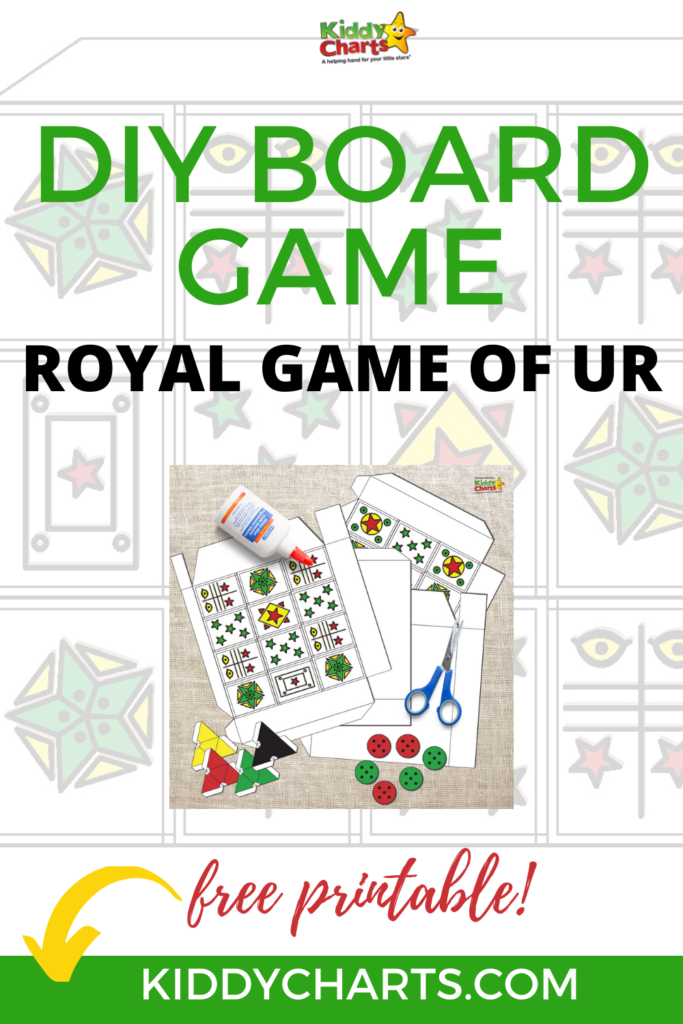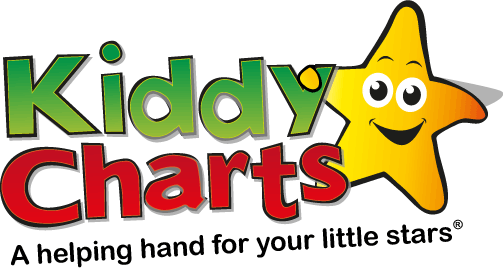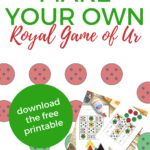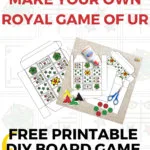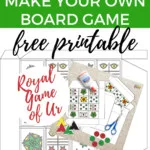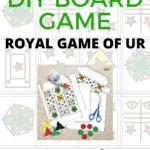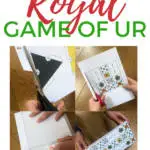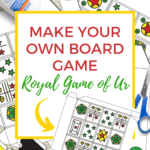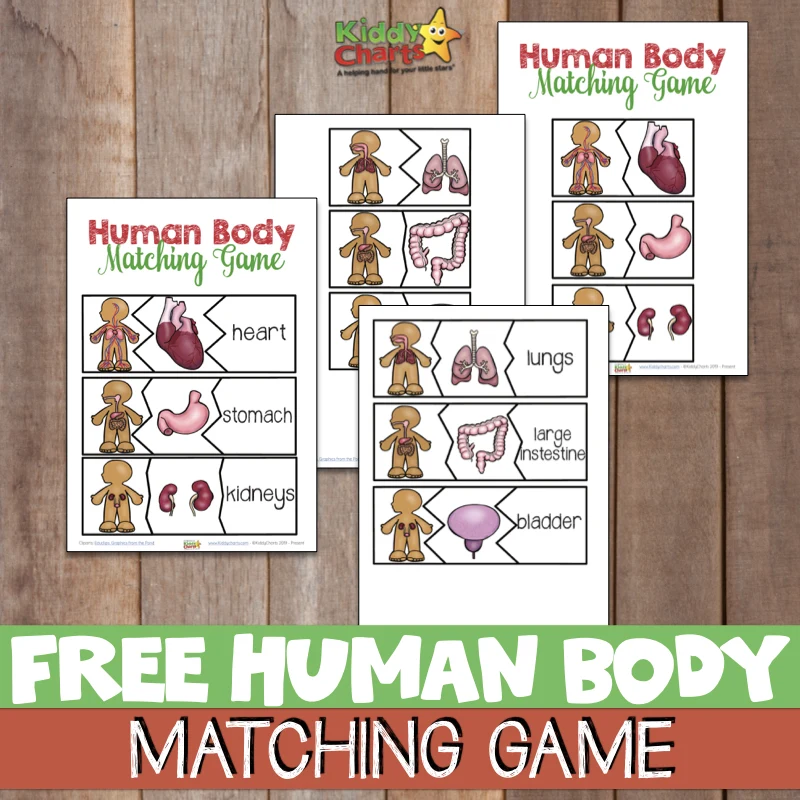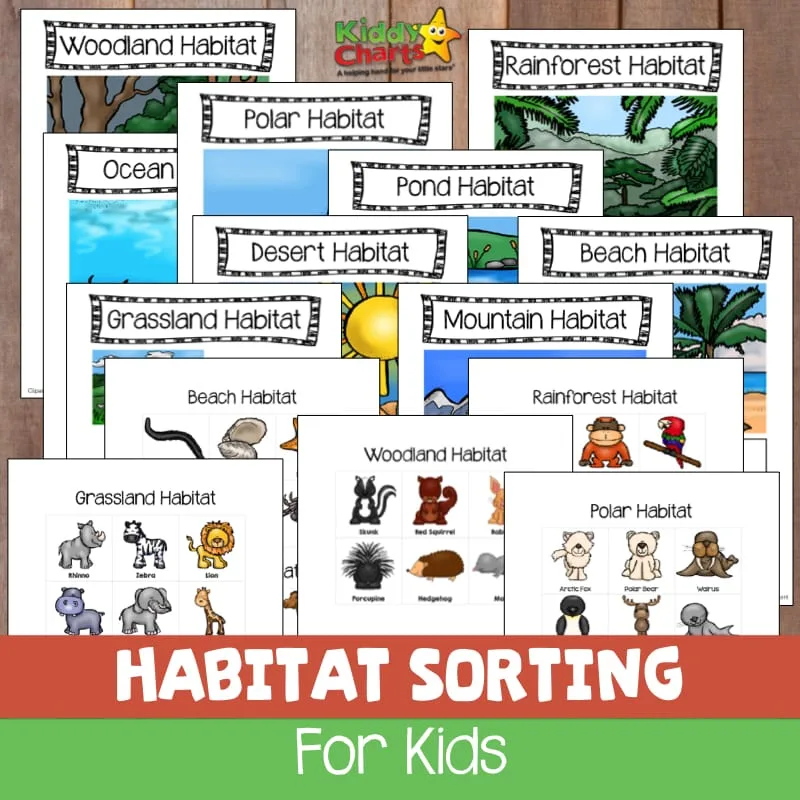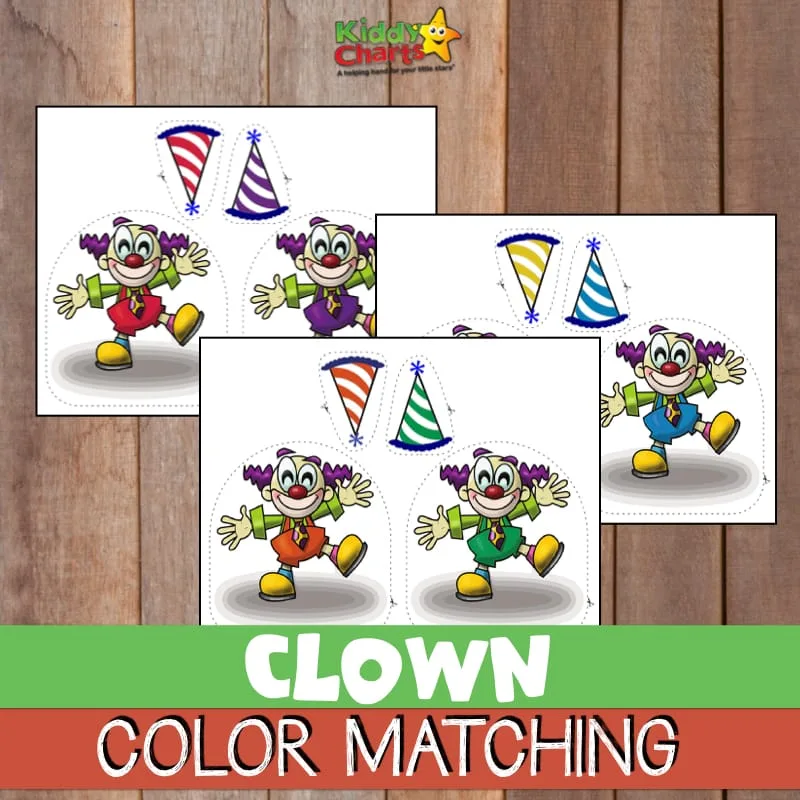We have something AMAZING for you today a Royal Game of Ur template. This template is inspired by the Royal Game of Ur. The game was found in the excavations in Eygpt at the cemetery of Ur by archaeologist Sir Leonard Woolley sometimes between 1922 to 1934. It is thought that the first board for this game was created in 2,600BC! So this really is a very old game that we can teach our kids. It gives us some wonderful learning opportunities as well; from talking about Ancient Egypt and the traditions around the dead to discussions about the ancient Egyptian gods. It is also brilliant for learning about Maths, as the nets involved help to understand shapes and engineering!
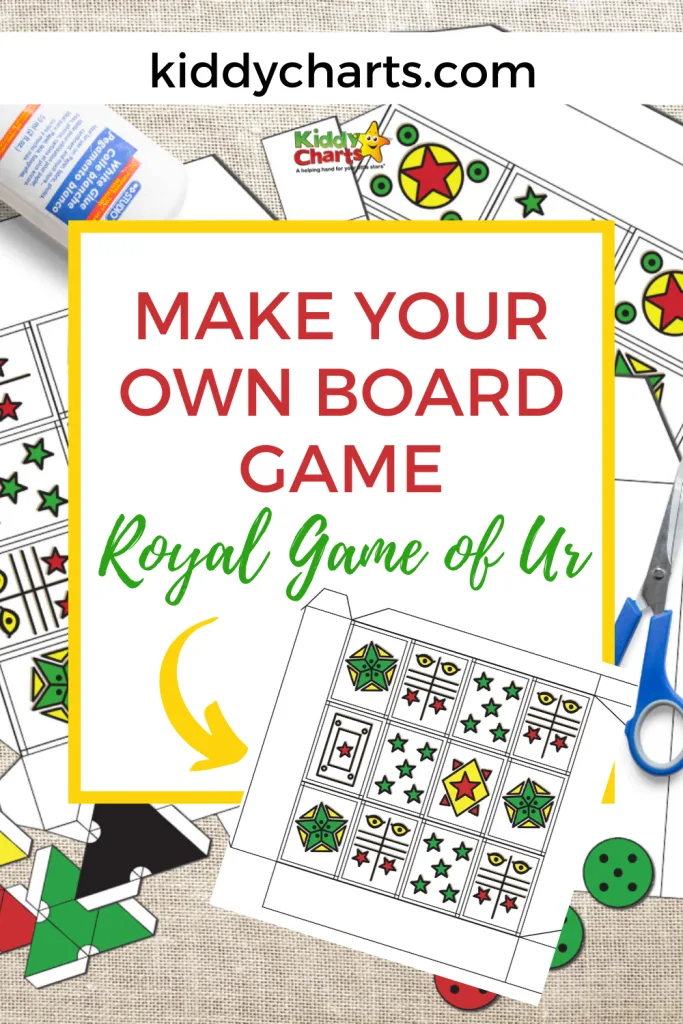
We have divided this post into a couple of different sections for you so that you are clear; making the game, and then playing the game. There are a number of different rules for the game. You can decide which ones you prefer to use with the template. Both the templates are FREE, but we do ask for donations for them if you can manage it; 80%+ of our profits go to charity, so it’d be lovely if you can help us a little if you can.
If you want the templates – here they both are in our shop:
- FLAT template is FREE, with a slightly cheekier suggested donation of £1.50, and
- 3D one is £4.50, with a suggested minimum donation of £2.50.
It is entirely up to you whether you want to donate more to us, just because you are feeling a little kind.
We spend a lot of time on our resources, and it would be lovely if there was a little appreciation of that and so more to our partner charity as a result. But feel free to go with whatever you want and can afford too.
We actually have a board game version of this ourselves that we played in the 1980s as kids. My children LOVE it and this is the game that inspired us to build this template for all of you.
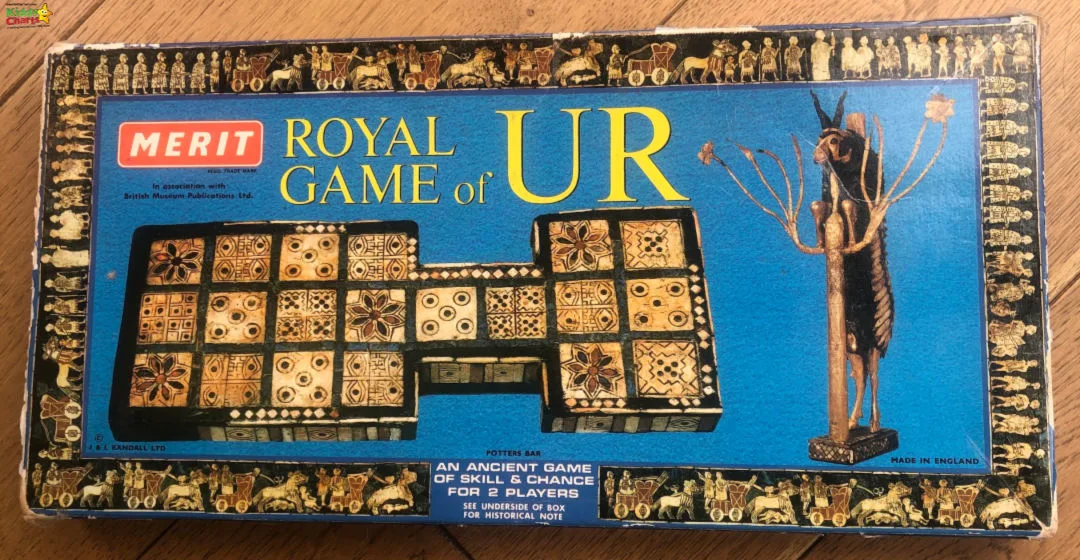
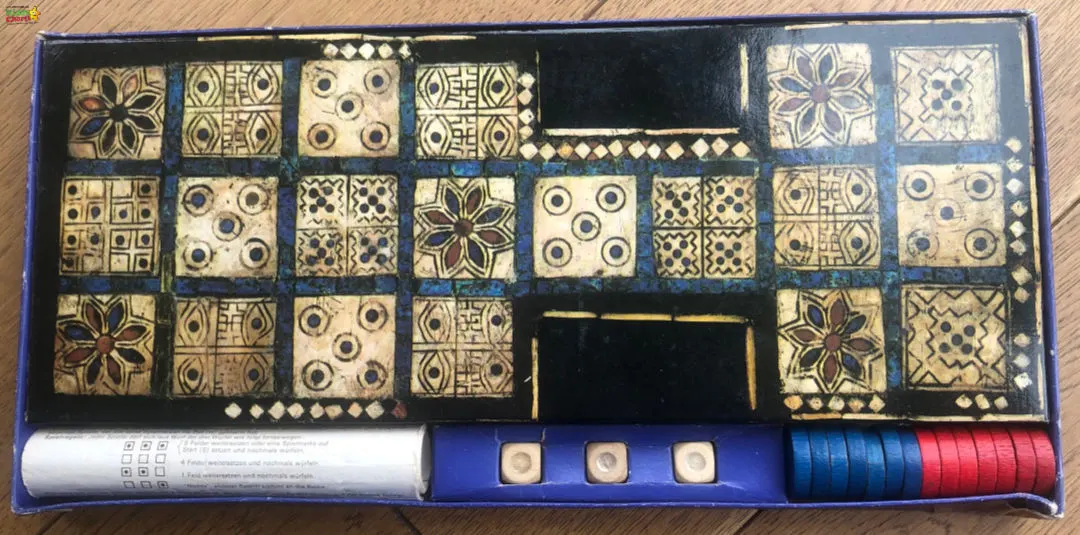
We really hope that you love it as much as we did as children, and our kids do now too. The rules are detailed below, as well as information on how to build the board too.
How to make the Royal Game of Ur inspired board game
We have two versions of this board for you (as linked to above). There is a flat version, which lets you play, with the dice, as well as a net version. The principles of play are the same for both.
Materials
- Royal game of Ur template (see the top and end of the article for the two template links for download),
- Glue or double sided sticky tape,
- White card (you can use paper but it probably won’t be study enough if you do, and
- A rules to make folding a little bit easier.
Making the Royal Game of Ur Dice
For both versions of the game, you need to cut out the dice and make them.
- Print out the dice template sheet

- Cut out the first of the dice shapes – you choose which one you want to do first of course

- We choose the black one here – but you can do any of them that you want! Cut out the complete triangular pyramid net. Then cut out all of the other nets, so you have all four ready to make! Though, of course, you can do them one at a time if you prefer…
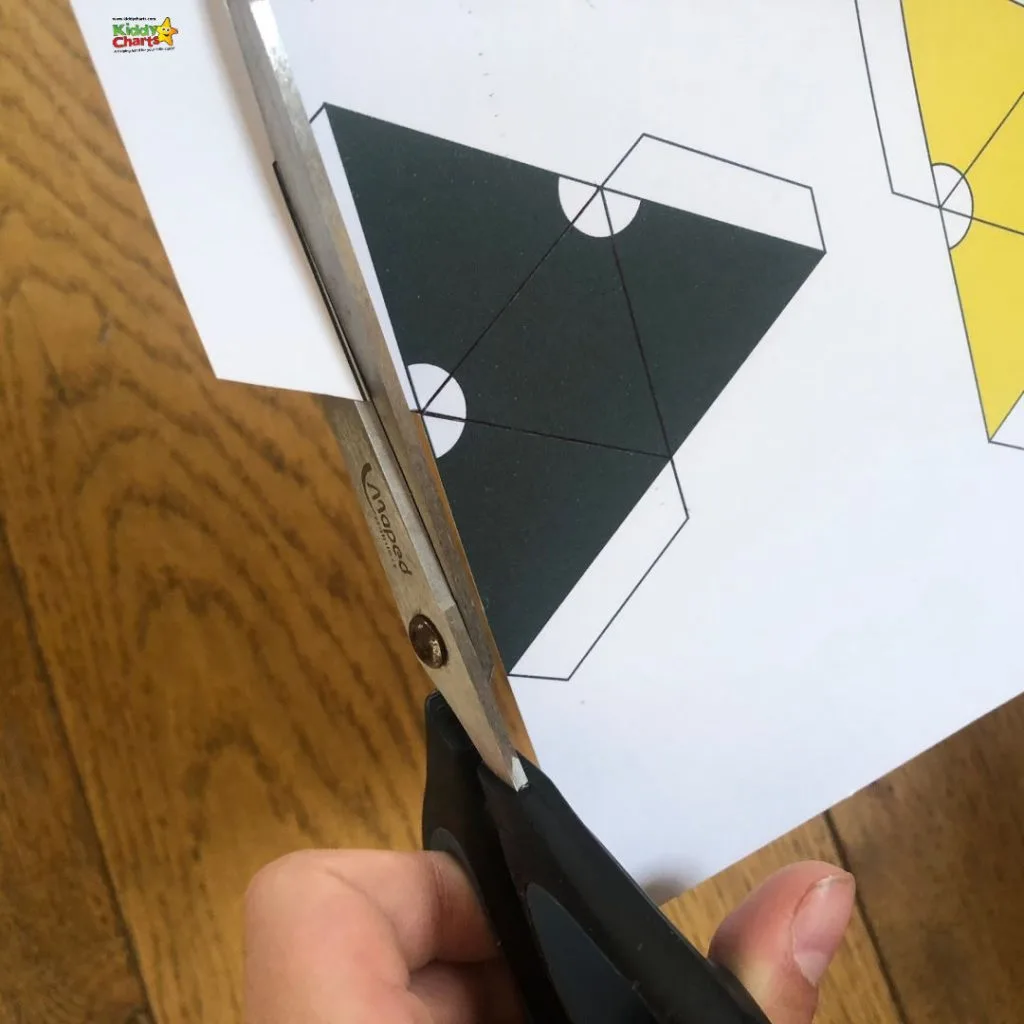
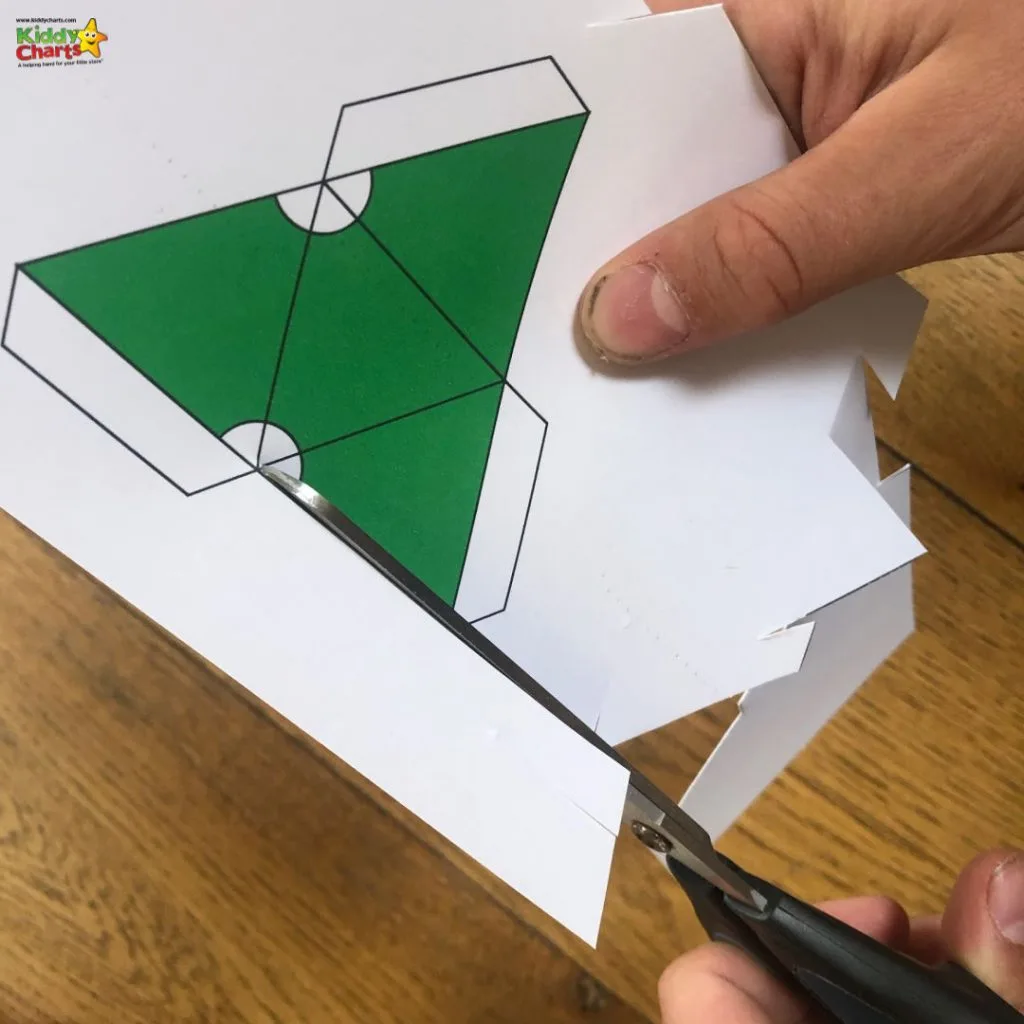
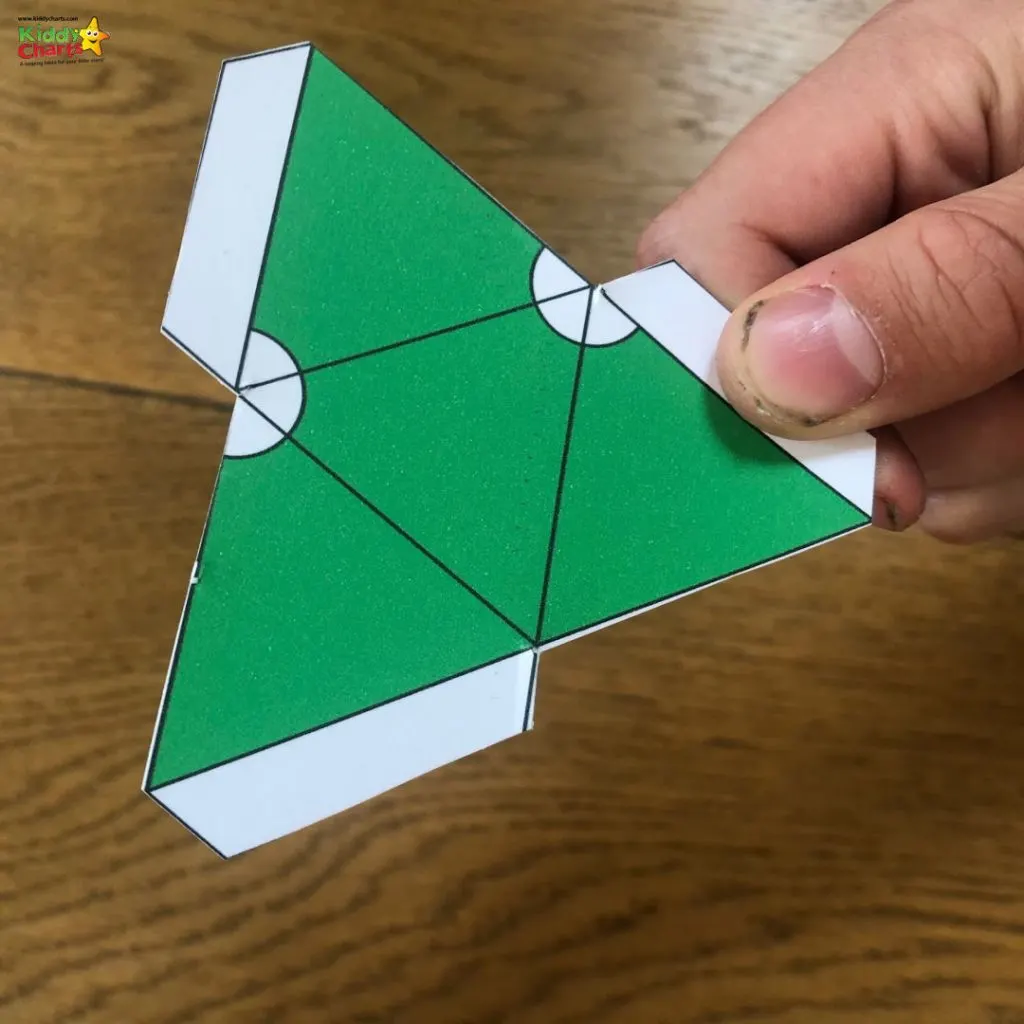
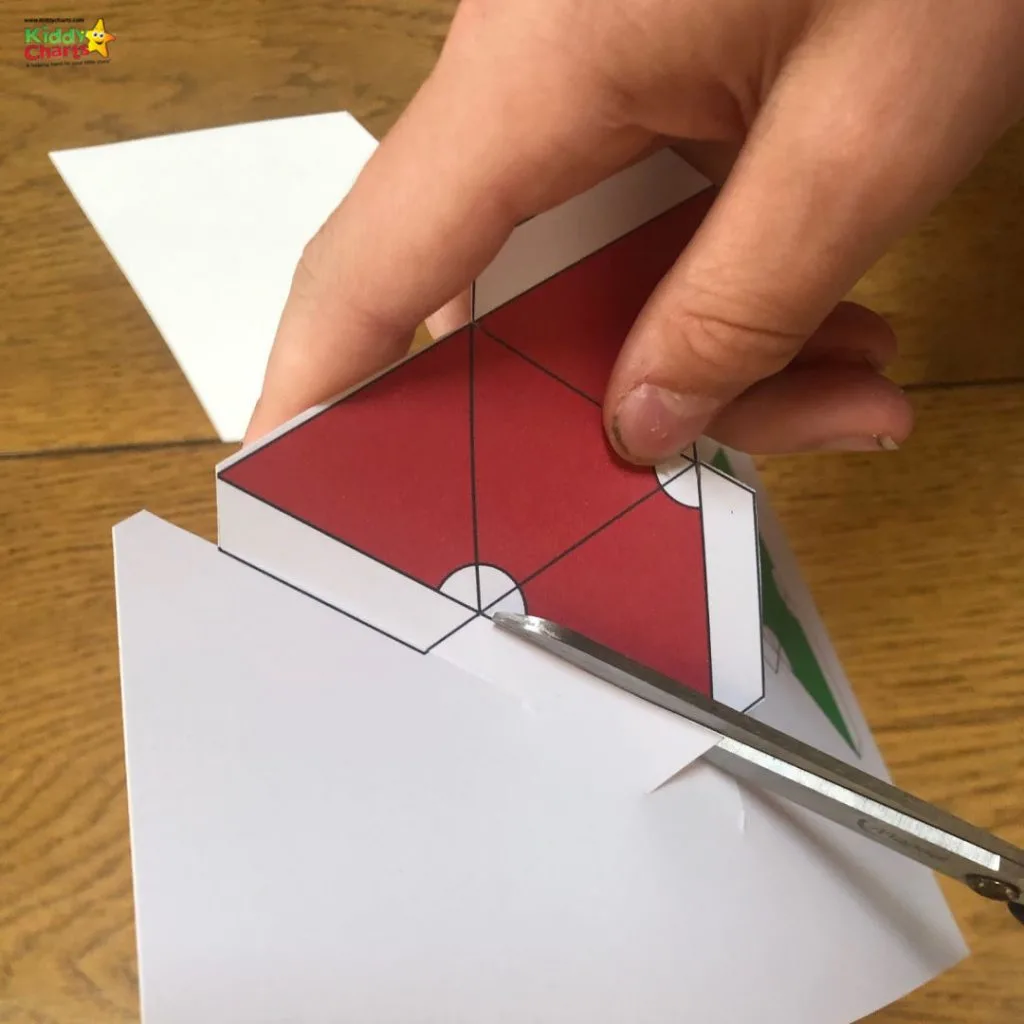
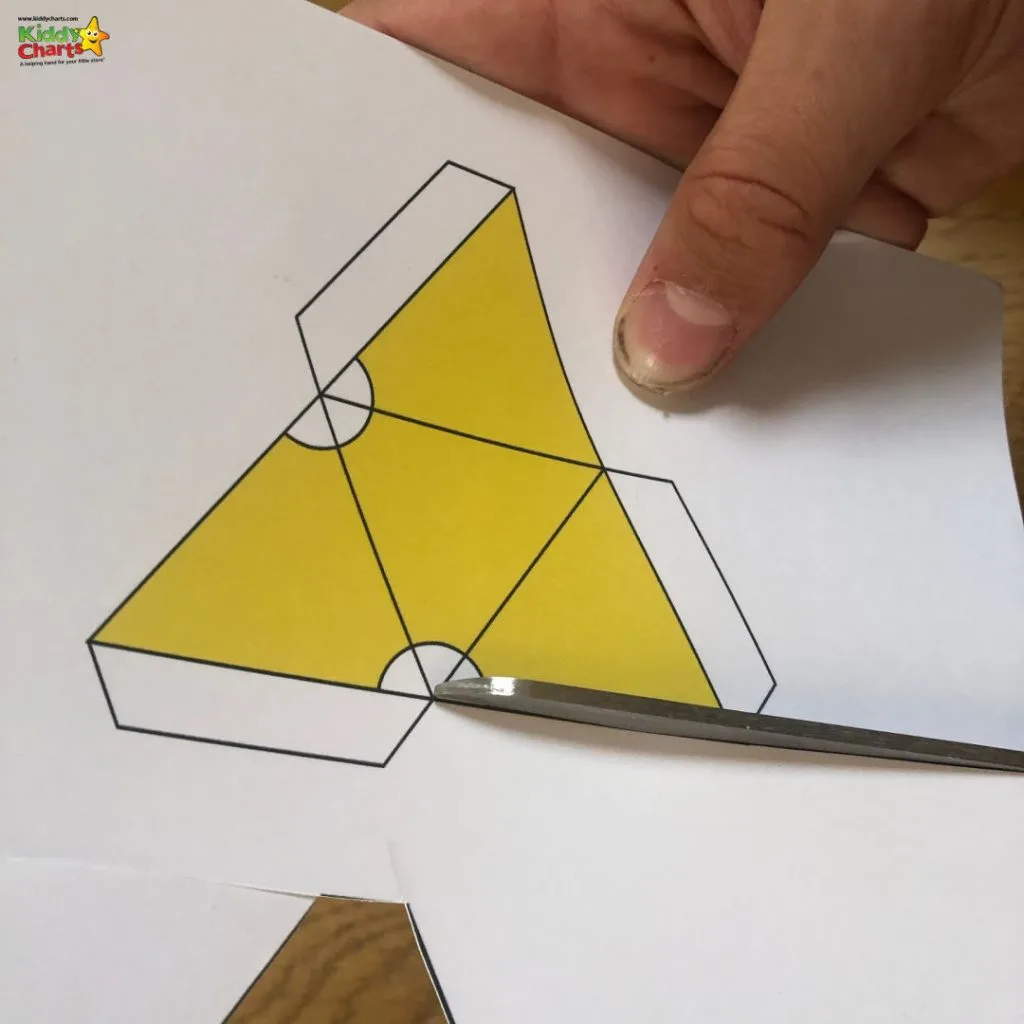


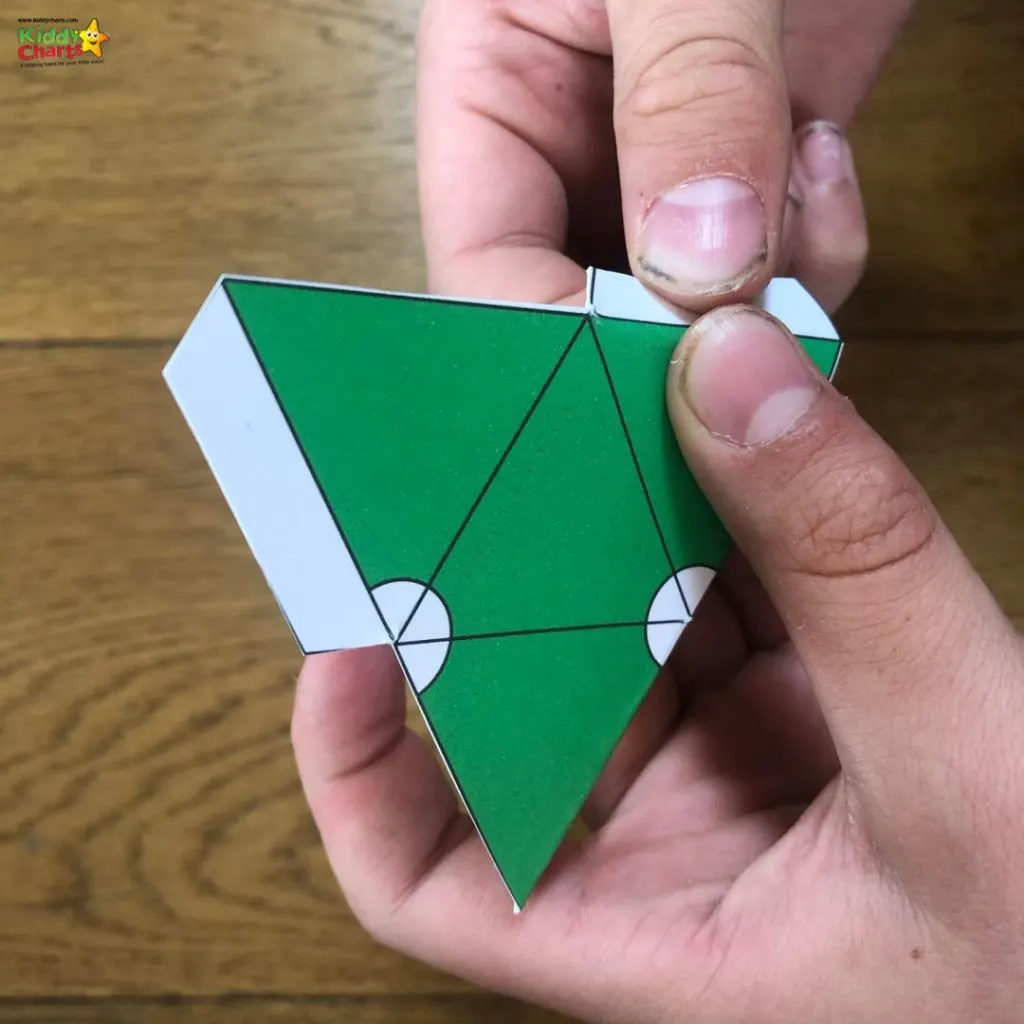
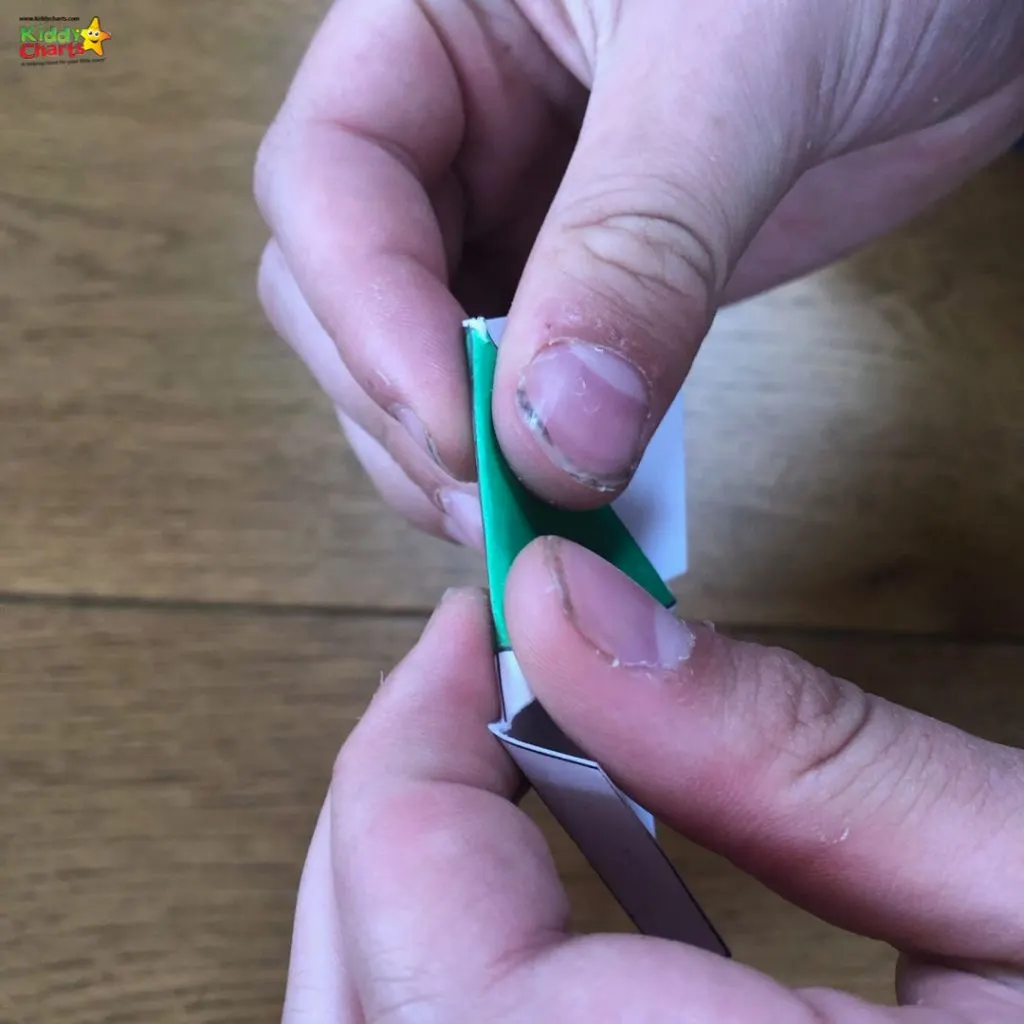
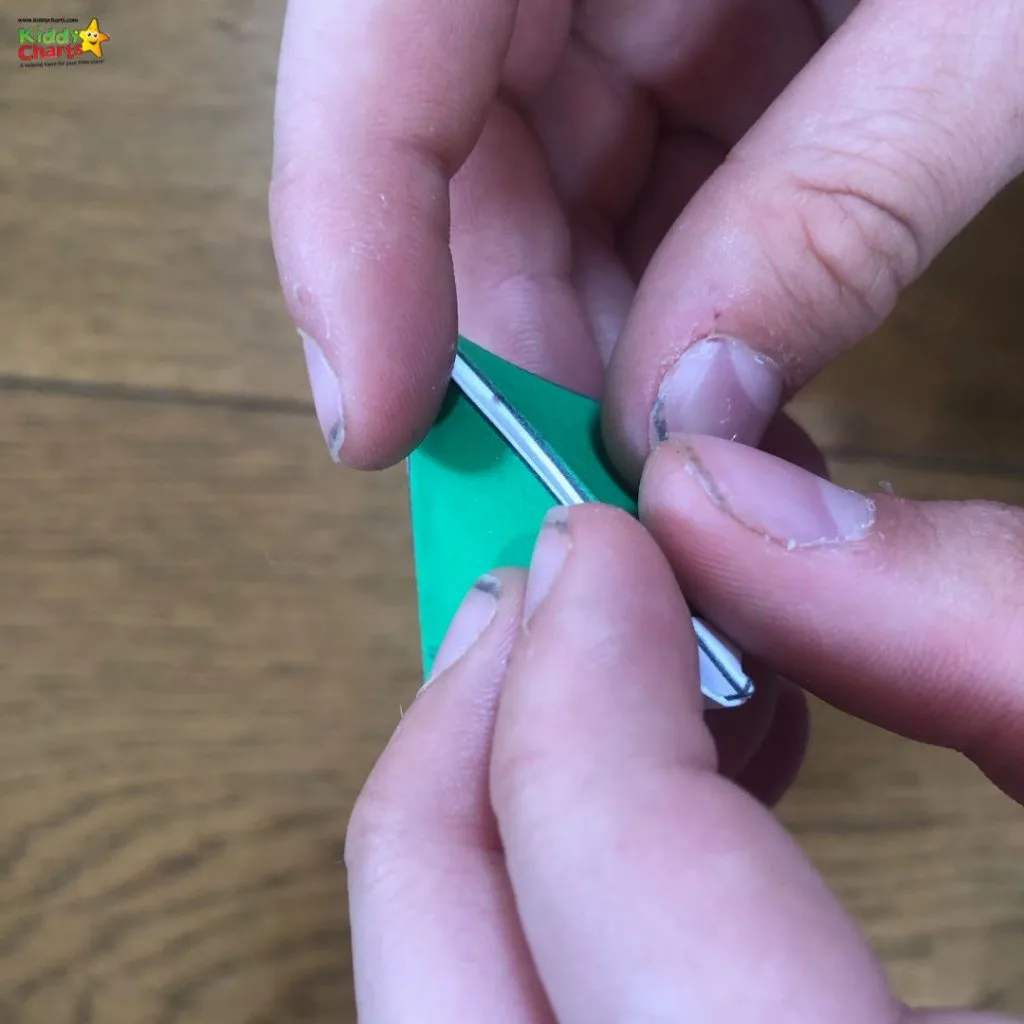
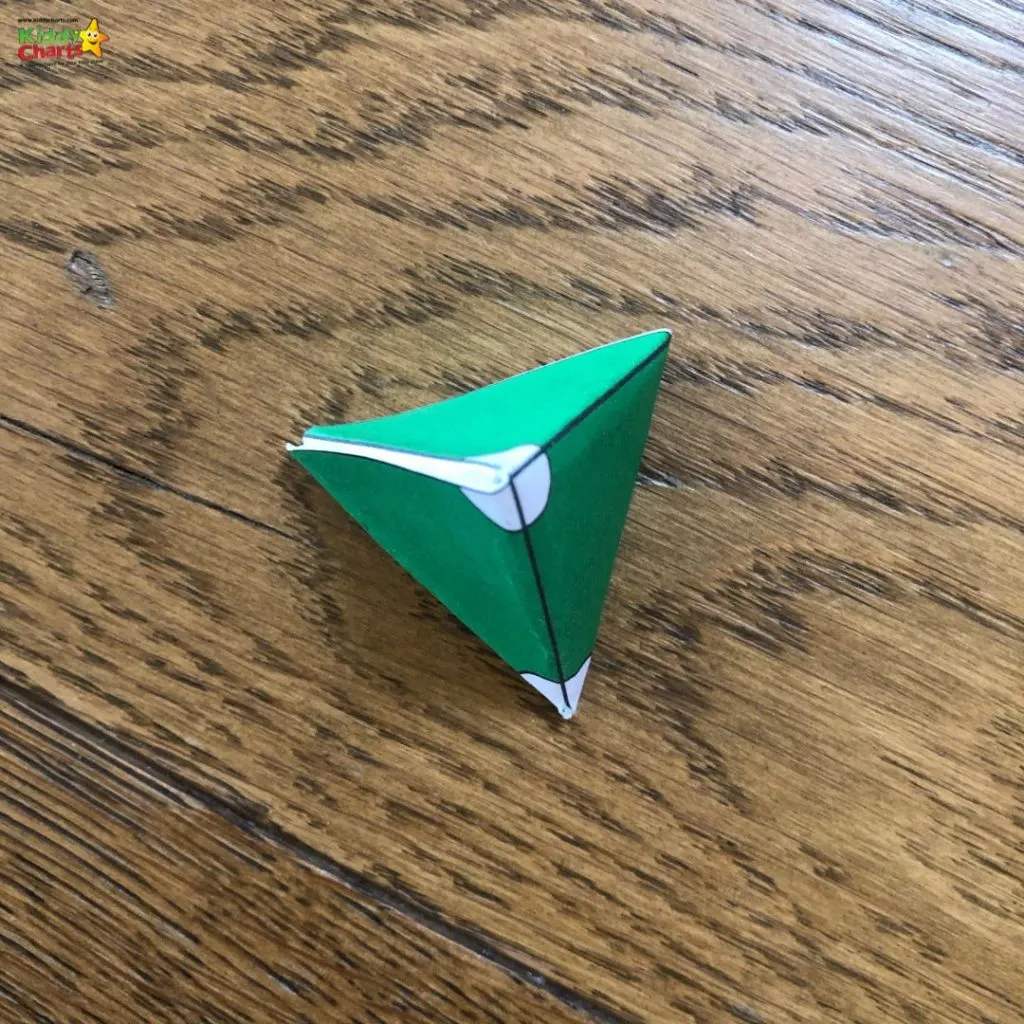

Making the Royal Game of Ur board
This can be as simple as putting the plat board together. Or a little more complicated to help teach the kids a little about mathematics, problem-solving and construction.
- Cut out the playing pieces from the sheet – there are green and yellow counter for the game

- When you have finished – you should have 9 different coloured tokens in two sets – one set for each player

- Then you can decide if you are going to use the flat board, or be a little more adventurous and use the flat board. If you use the flat board, just cut it out, and clue together using the tab. If you are using the template to build the 3D board, then read on….
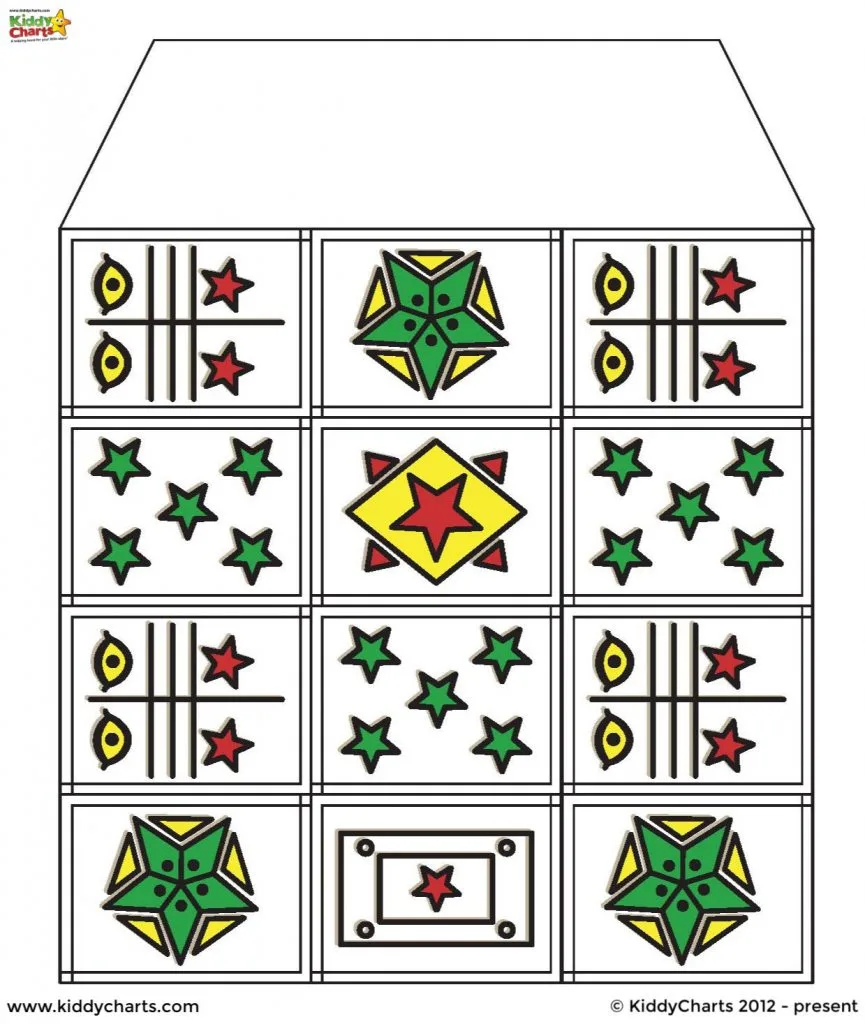
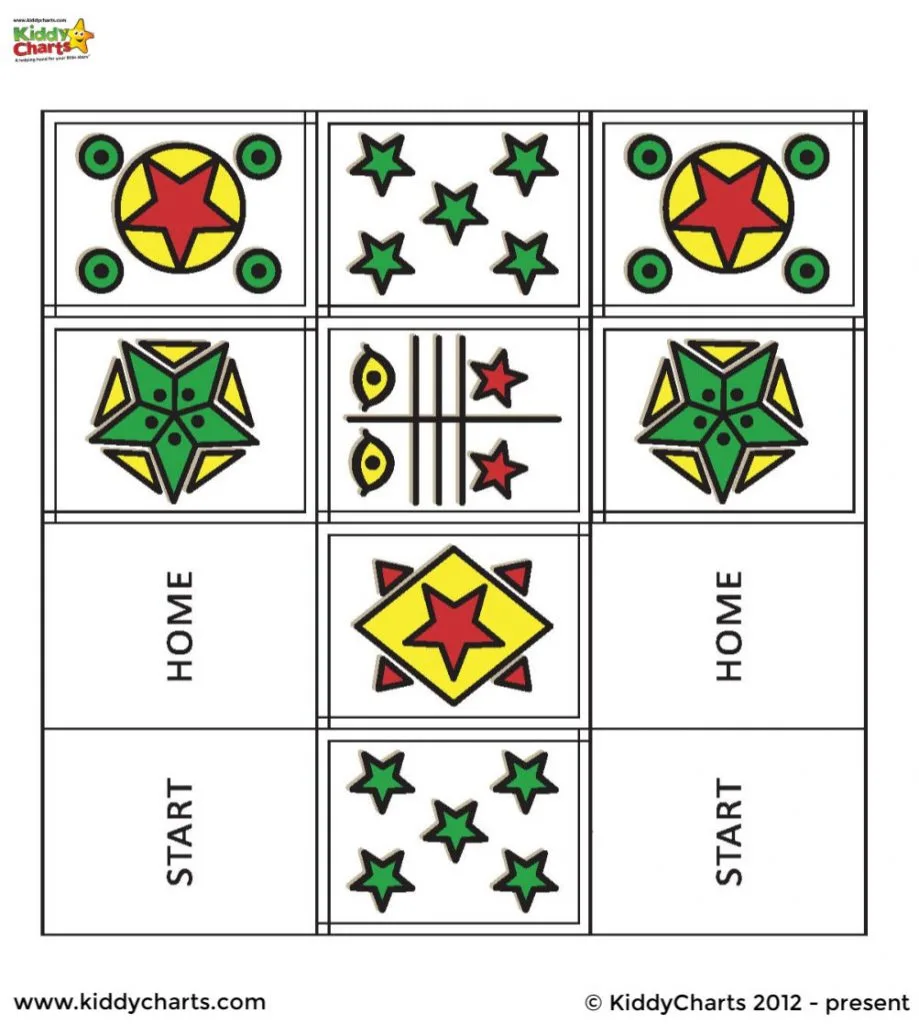

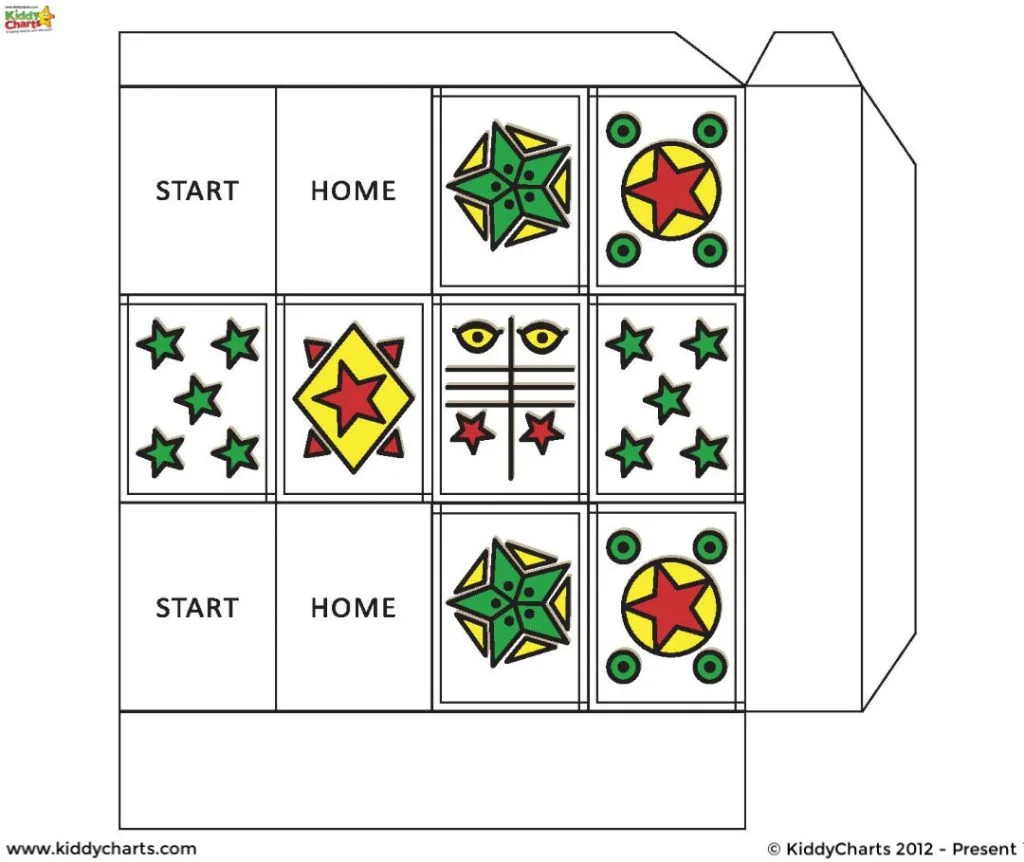
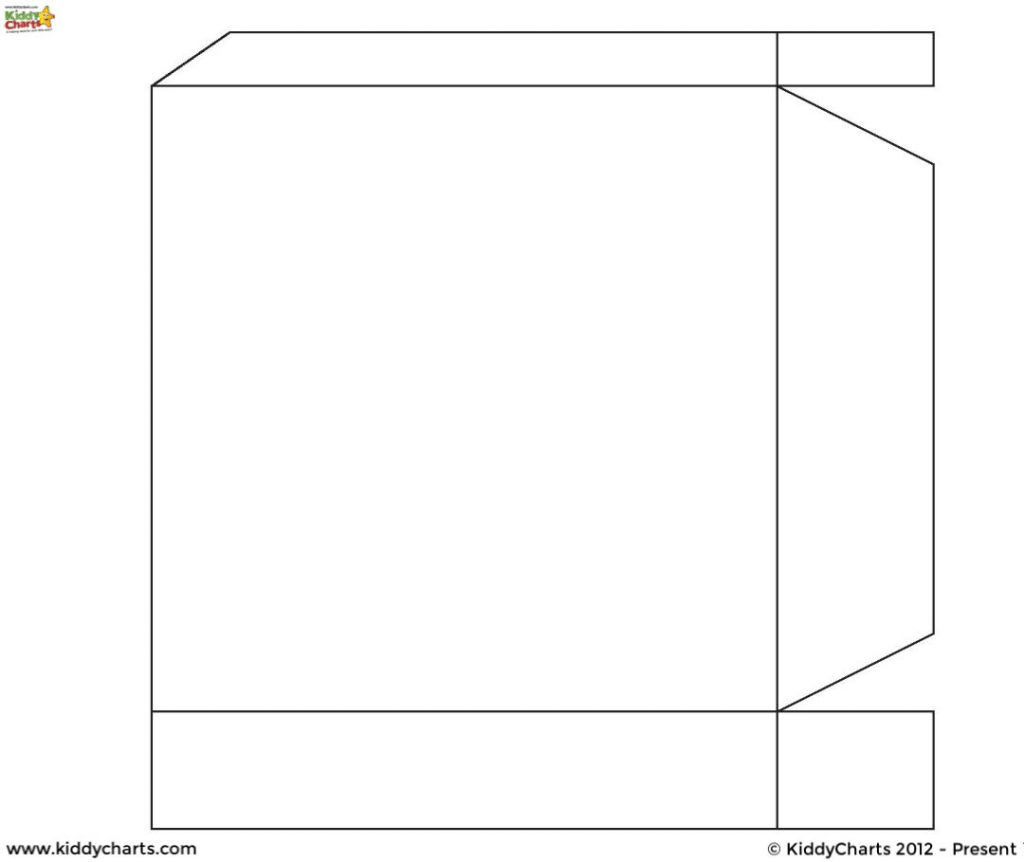
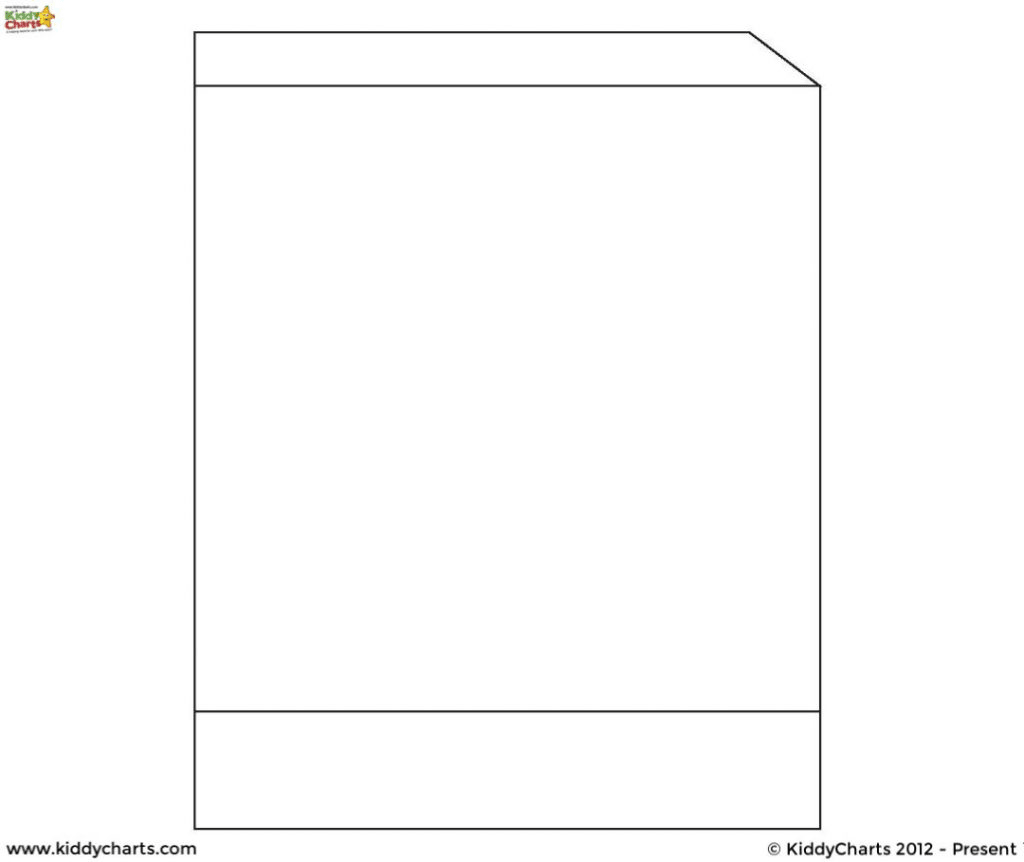

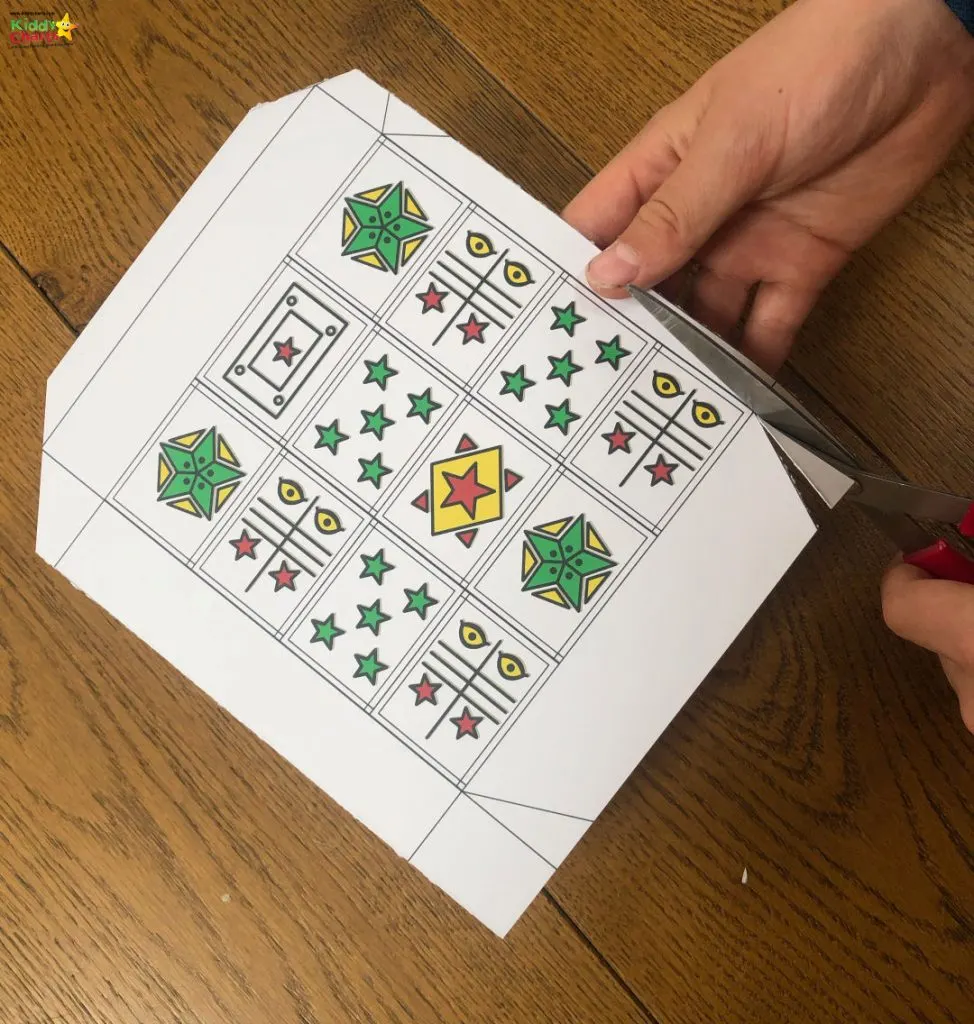
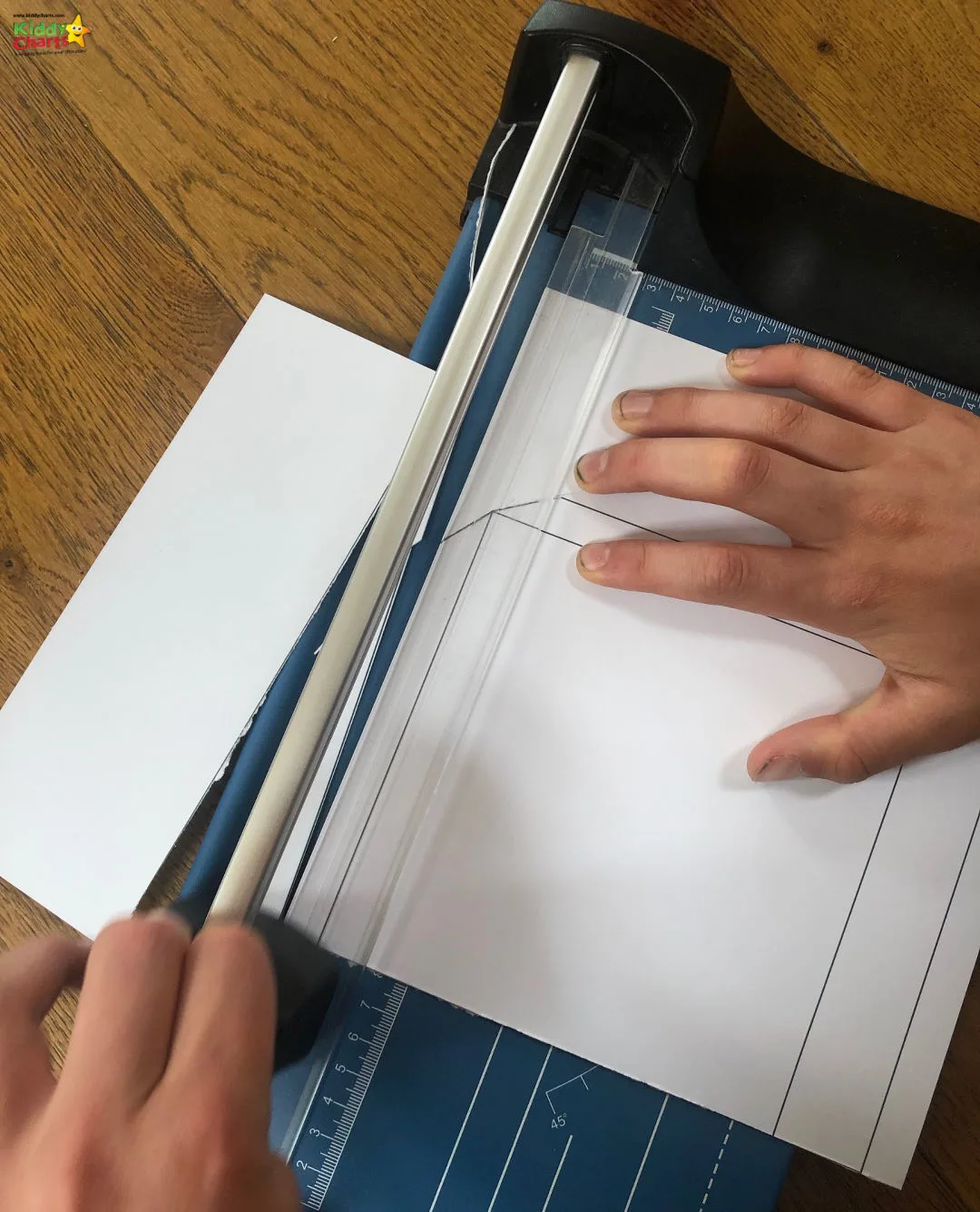
 You can start putting them all together…
You can start putting them all together…
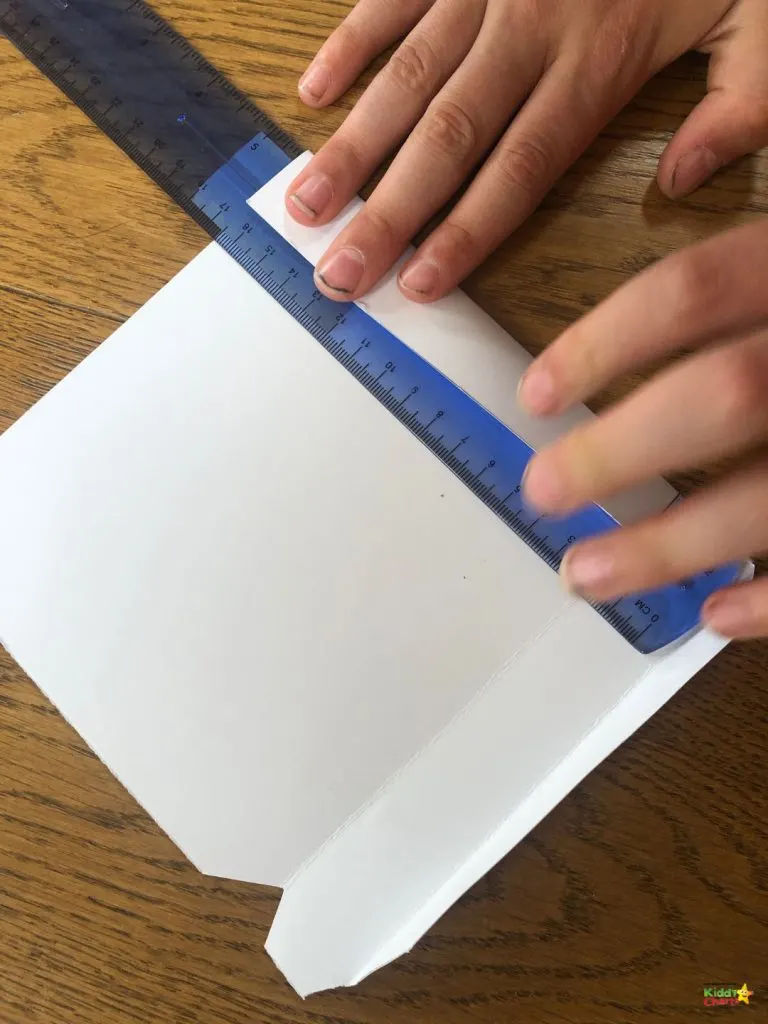
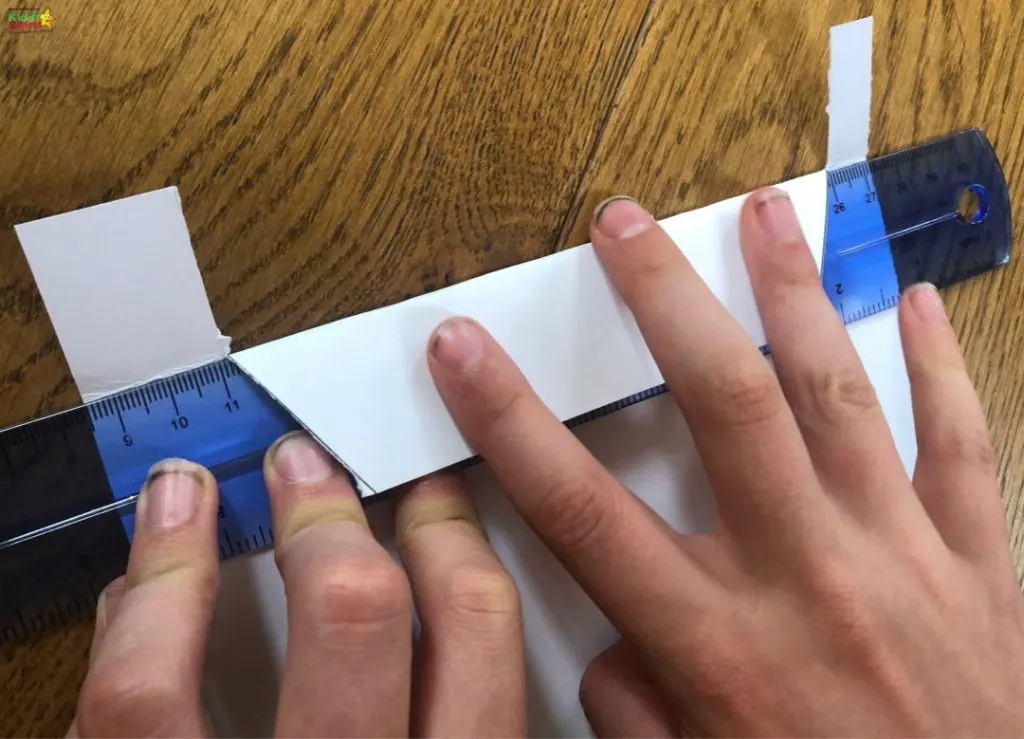
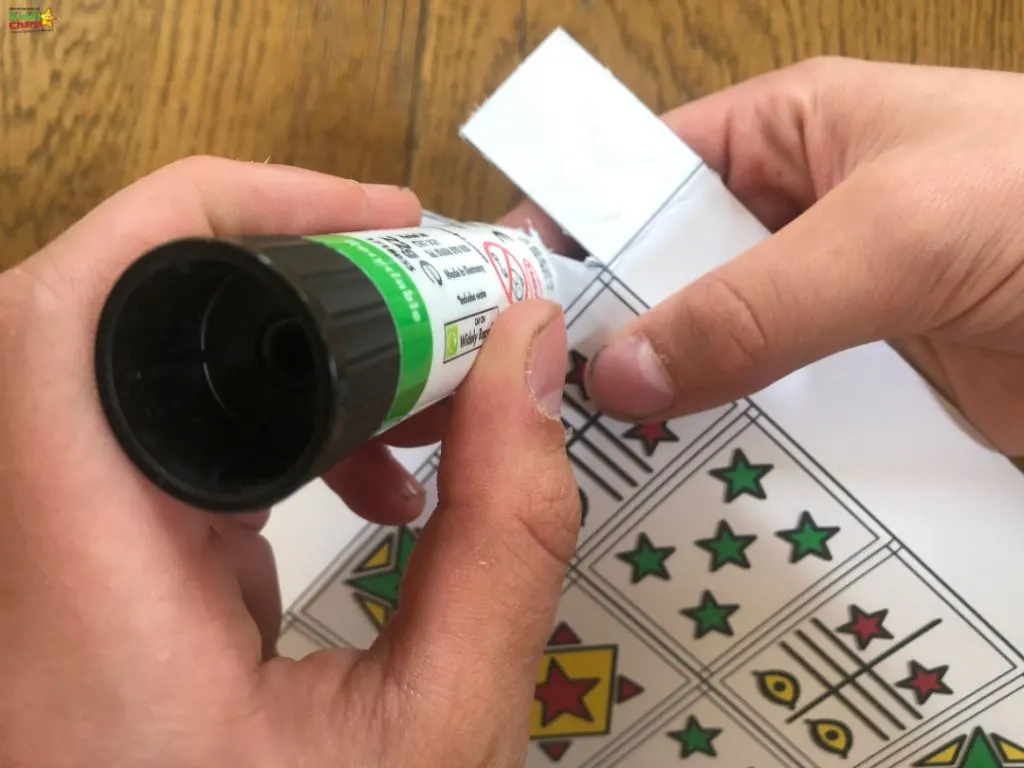
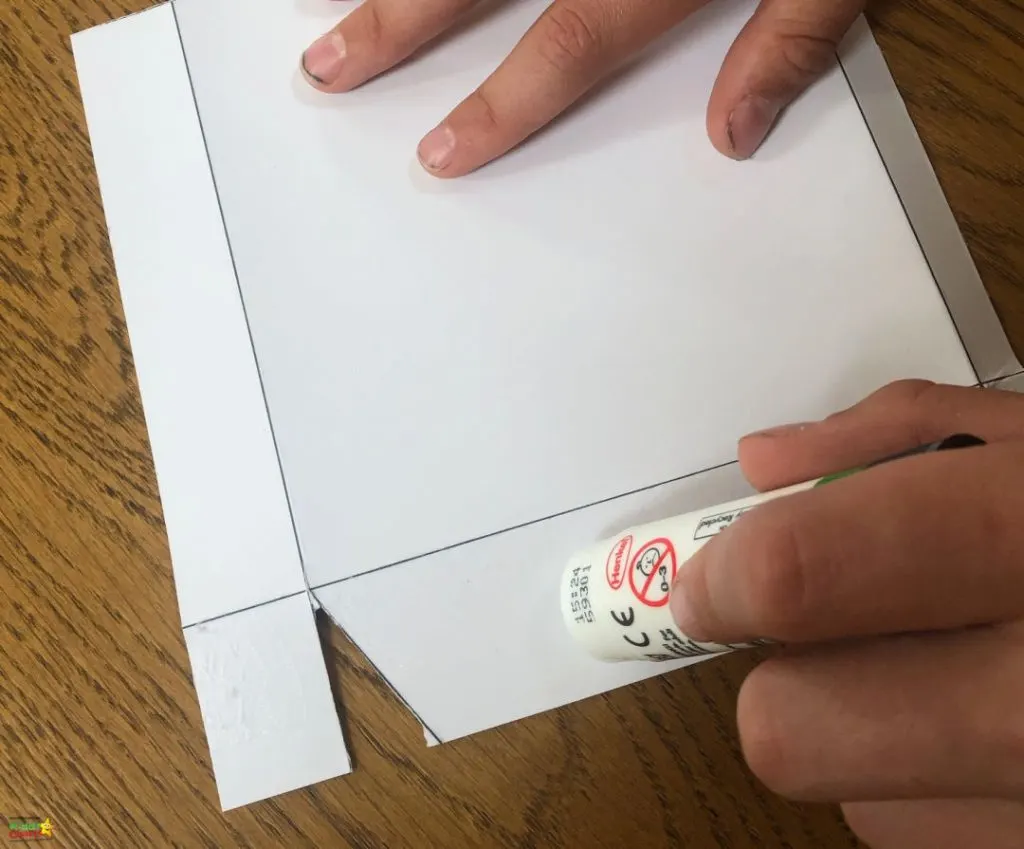
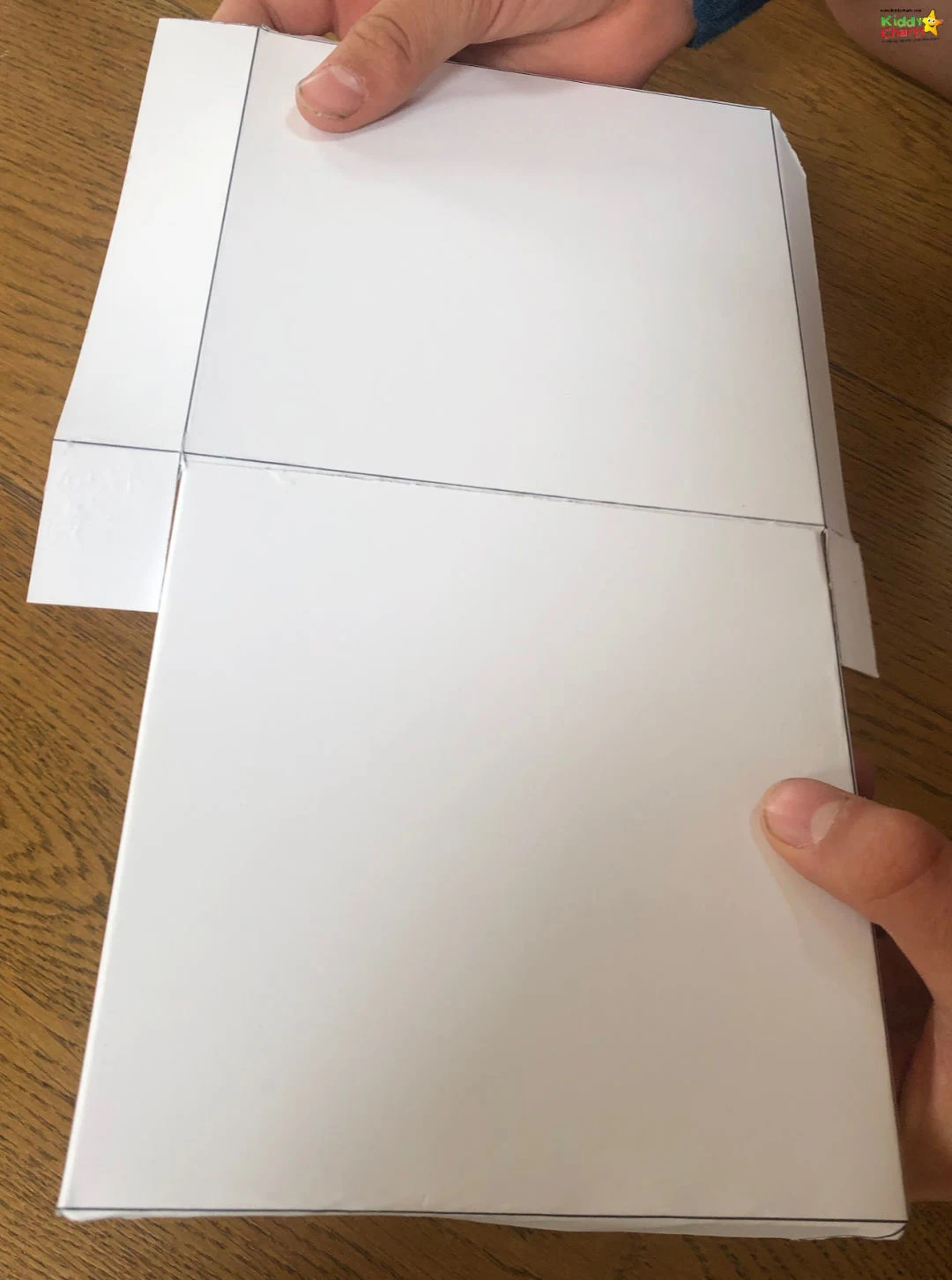
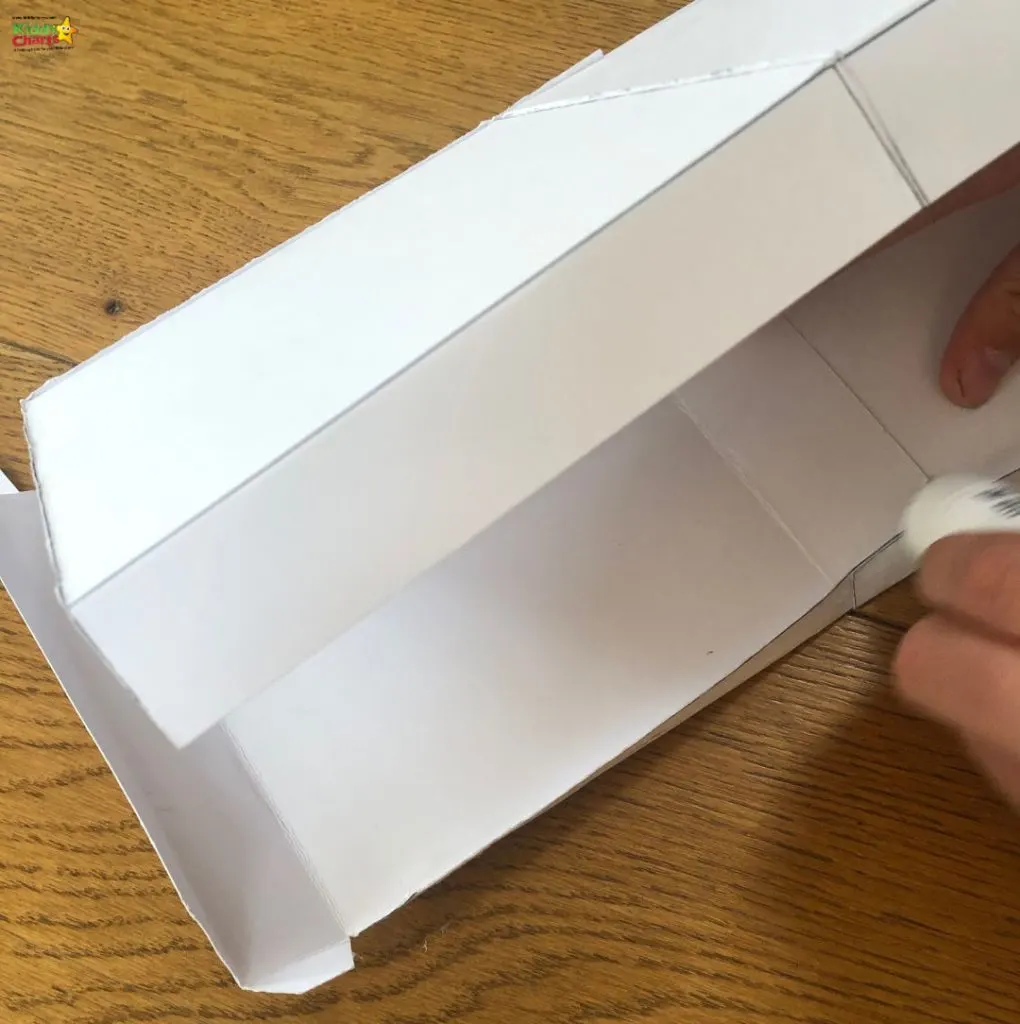
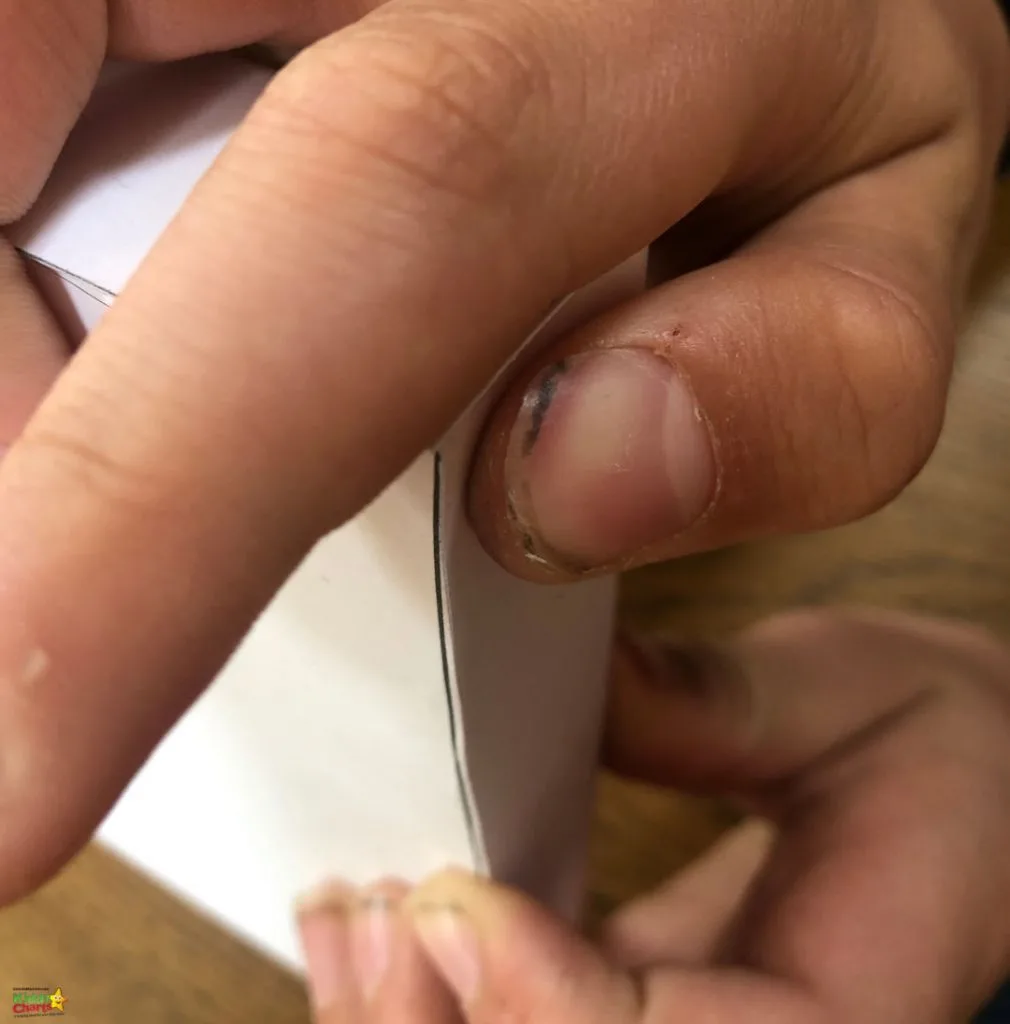
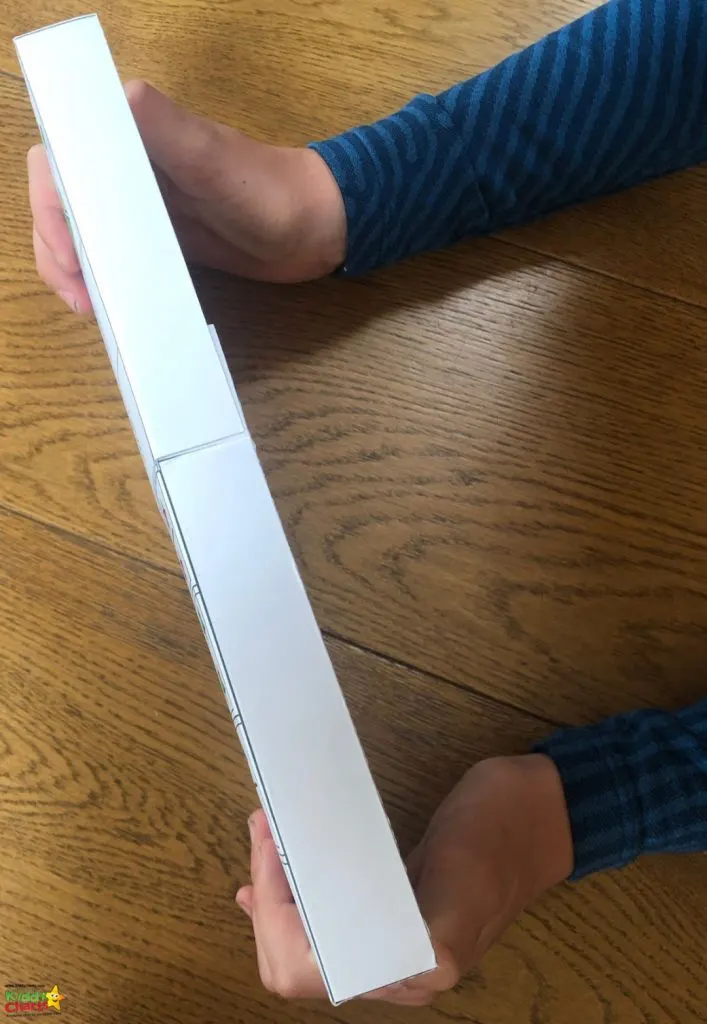
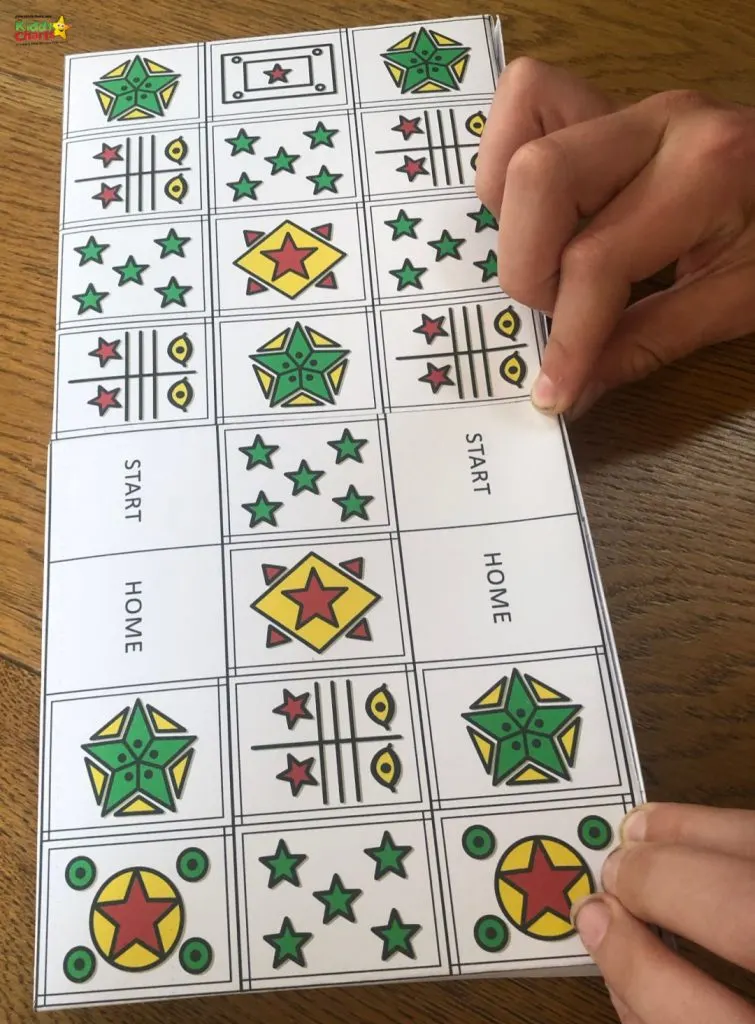

As you can see from the last image above, you can also pinch the sides ever so slightly to hold them together, and if you are building from white card, the board keeps its shape.



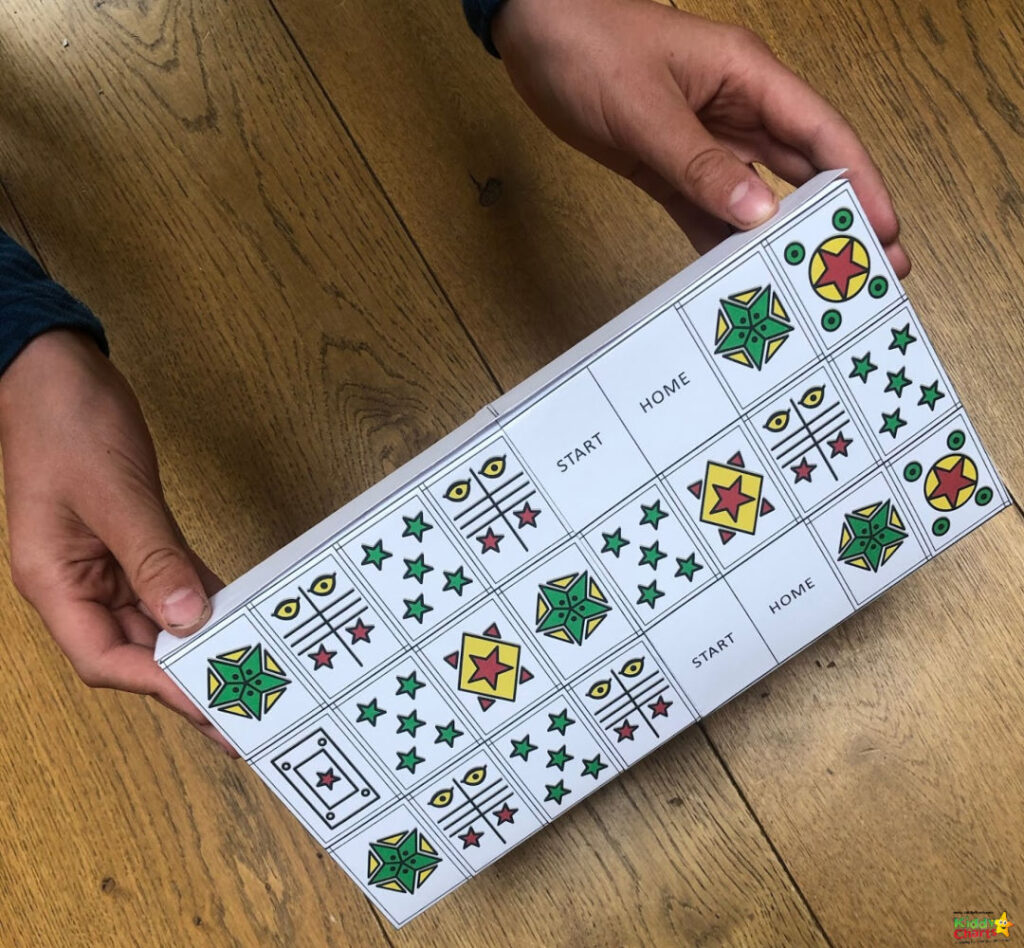
Once completed, alongside the dice and the pieces, you are now ready to play!
How to play the game using the template
There are a lot of different versions of this game, and there are even some free online versions out there too. If you want to know what the rules are, check out the Masters of Games. This gives you an overview of all the copyrighted rules, from the various different games that have been released over the years; including those from a curator of the British Museum.
Our board has been particularly inspired by the R. C. Bell version of the game. With this in mind, you can play the game with the specific squares means specific actions if you land on them…
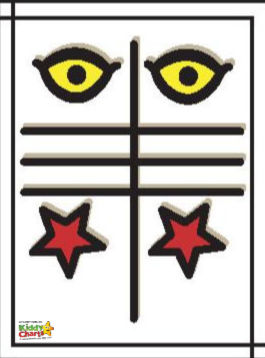
Landing on this space means that your opponent can enter a piece on the START space on the board.
This is the most annoying of ALL the squares in the game, and we try and avoid it at all costs, but sometimes you just can’t help landing on it!

This is a much more pleasant square to land on.
For this one, YOU get to add a piece to the START square on the board.
A lot nicer when you land on these than our eye based designs….

We present you with the BEST of the squares last.
If you land on this square, then you are able to move the same number of spaces that took you to the square in the first place.
This means that if you landed on the second one of these on the board (there are only two) with a five, you can get your piece home!
For the movement rules, the dice are used, and how many of the dice land with a white point at the top tells you have far forward you have to move, or if you can enter a new piece on to the board.
We hope you agree the dice work rather well, don’t you think?
Depending on the version you are playing, the rules for moving different slightly.
One of the joys of this game is to find the rules that you like best and stick with them.
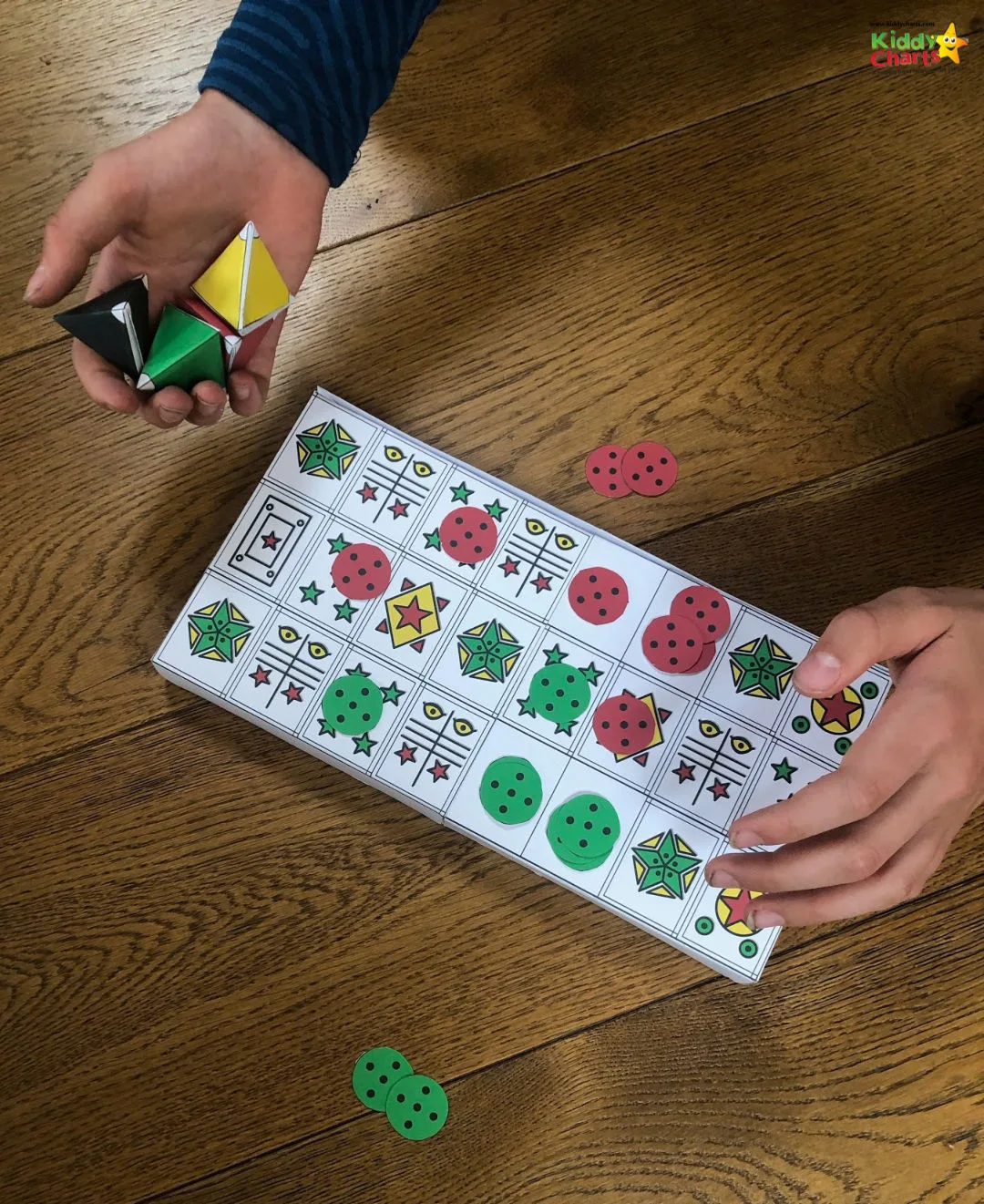
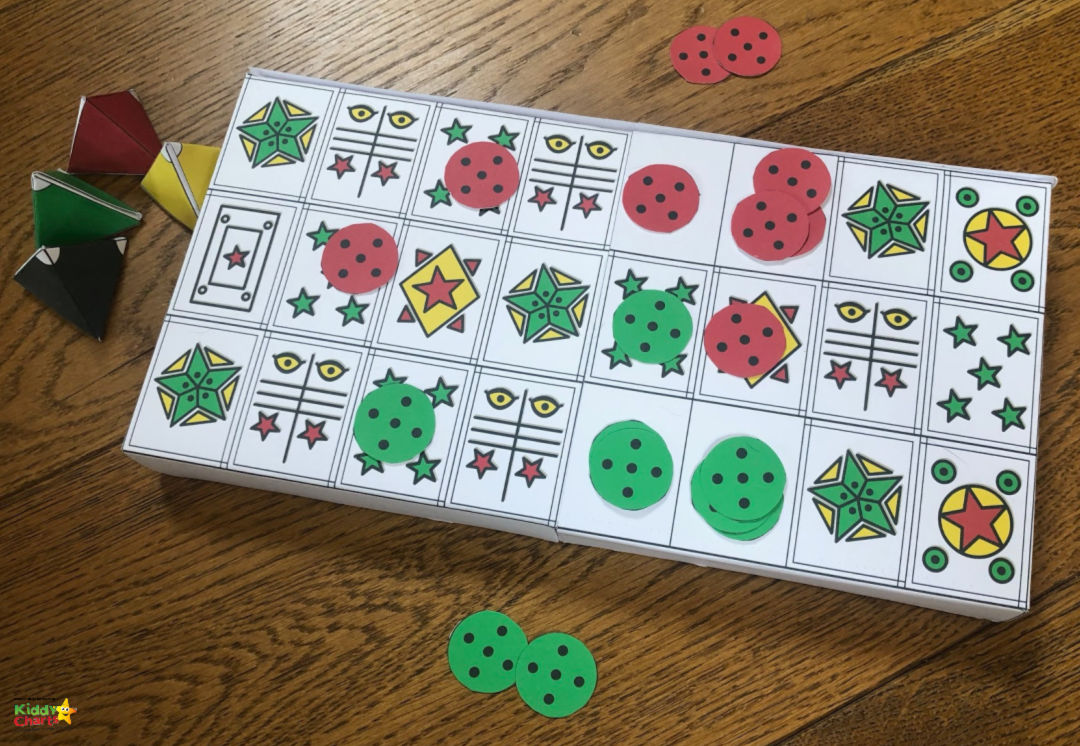
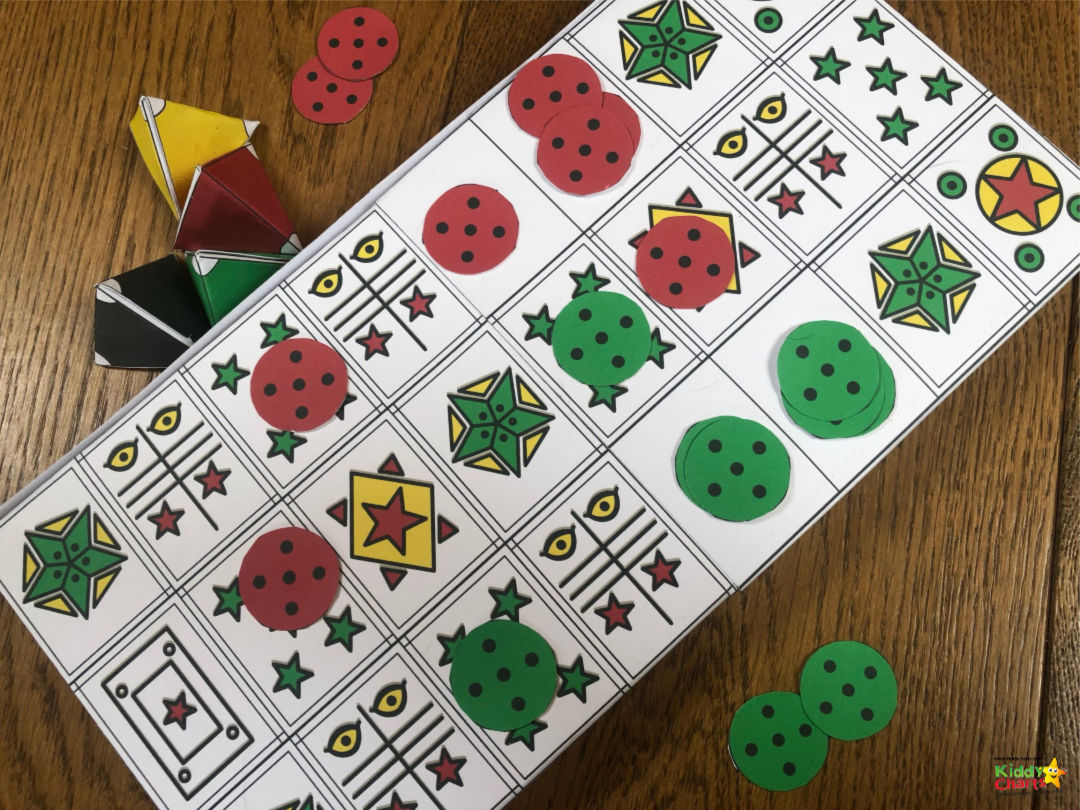
Once you have decided on the rules, you are ready to play – good luck!
To download this game you need to take a look at the flat template here – it IS FREE; but if you can spare a little we would be grateful as we are a Social Enterprise:
And then full 3D template here:
We do hope that this is something you can have a go at and will help your kids to have LOADS of fun. We do have loads of other wonderful resources on the site of course, including another article on making your own board game, so take a look at them too.
More printable games to play for free on KiddyCharts
Free game: What's in the Bag?
This is a wonderfully fun and simple game for the kids to play - print it out and off you go!
Human body matching game - Free printable
Fun game to help with learning human body parts.
Animal habitats sorting game for kids: Free printable
An animal habitat sorting game for the kids to play to help them understand the environment around them.
Learning colours: Clown colour matching game
Colour and clown matching game
If you like our fabulous shop – do check out some of our other products too won’t you – including our editable calendar.
Thanks for coming to see us, if you like the site, then do sign up to our newsletter as well.
Take care,
Helen
